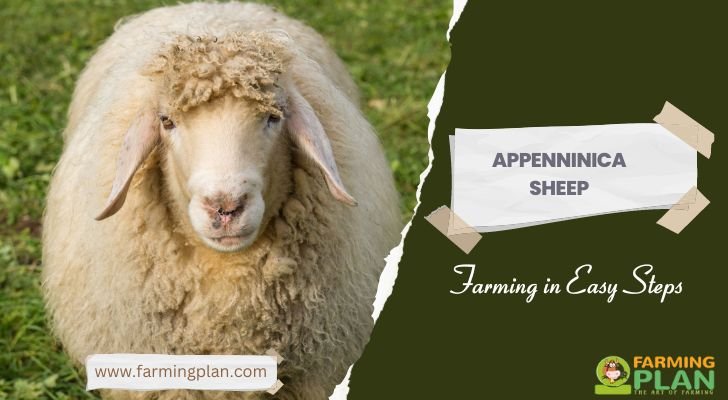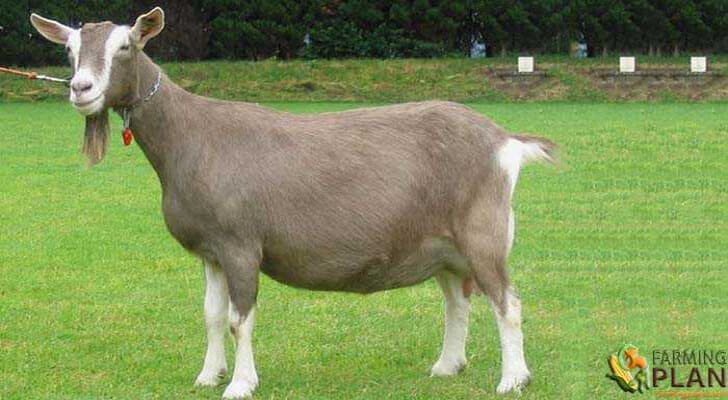Are you intrigued by the notion of harvesting your wool? Or owning a flock that can sustain itself for years to come? It’s easier than it may seem with Appenninica sheep. Originally raised in the central Apennine mountains of Italy, this ancient breed is now found throughout Tuscany, Umbria, Abruzzo, Emilia–Romagna and Lazio as well. From acquiring land and constructing necessary fencing to developing an effective rotation grazing system, you’ll want to understand all the basics before getting started with your Appenninica farming venture – let us help! In this blog post, we will discuss how each step of the management process contributes to successful Appenninca sheep farming.

History & Origin
The Appenninica Sheep is a modern breed of sheep that originates from the central Apennine mountains in Italy. This unique breed has been around since the late 19th century when it was established in Tuscany and Umbria. Since that time, it has spread to different regions in Italy such as Abruzzo, Emilia–Romagna, Lazio and the Marche. They are primarily used for their wool and used in the leather industry. The Appenninica Sheep is known to be highly adaptive and resistant to disease, making them a great choice for farmers needing hardy animals that can endure harsh weather conditions.
Characteristics
The Appenninica sheep is a modern breed that originated in the central Apennine Mountains of Italy. This breed is especially known for its distinct angular head, long legs and robustness – characteristics that make it well-suited to the rougher terrain of its native mountainous region. Its wool is also greatly sought after for its elasticity and strength. Furthermore, this species thrives mainly in Tuscany and Umbria; it can also be found in other regions such as Abruzzo, Emilia–Romagna, Lazio and Marche. The Appenninica Sheep is an excellent example of an attractive animal that combines tough qualities with beautiful ones – an impressive combination indeed.
Feed
The Appenninica Sheep is a definitive part of the culture and customs of the central Apennine Mountains of Italy. Raised primarily in Tuscany and Umbria, but also spread to many other regions, their diet consists largely of scrub and grass species on the surrounding hillsides, which helps to keep wild plant populations in balance with the local ecosystem. They mainly feed on herbs found in meadows as well as clovers and legumes. In addition to these benefitting the environment, they provide excellent quality meat and wool that could otherwise be lacking in such rural areas.
Usage
The Appenninica is a unique breed of sheep that has proven invaluable to those living in the Italian Apennine mountains. Raised principally in Tuscany, Umbria, Abruzzo, Emilia–Romagna, Lazio, and the Marche, these fine animals are primarily used for their luxurious wool. Shepherd families have long been using the wool of the Appenninica to create garments and fabrics known for their warmth and durability. More recently, this talented breed has been employed in the dairy industry for its delicious milk products like cheese, yoghurt and butter. In fact, due to its versatility, the Appenninica has become quite sought after beyond Italy’s borders too!
Benefits
For anyone looking for a hardy and versatile breed of sheep to add to their farm, the Appenninica Sheep is an excellent choice. These animals are native to the Apennine Mountains of Italy, where they have adapted to life in rugged and often difficult terrain. They have also been specifically bred for good maternal qualities and resistance to disease, making them particularly well-suited for organic farming practices. Further, they produce superior-quality milk, meat, and wool with distinctive characteristics; all of which can be used in commerce or consumed directly on the farm. With so many benefits associated with this resilient breed, farmers who want to diversify and add some character to their flock should strongly consider adding Appenninica Sheep today!
Essential Requirements
Raising Appenninica sheep is a rewarding farming experience, but it comes with certain conditions that must be met for the animals to thrive. This hardy breed comes from the central Apennine mountains of Italy and is primarily found in the regions of Tuscany, Umbria, Abruzzo, Emilia-Romagna, Lazio, and The Marche. For these sheep to reach their full potential and produce robust wool quality and maximum yields, they require adequate nutrition along with ample grazing land that provides sufficient levels of moisture. In addition, proper environment management and timely vaccinations against diseases are instrumental in ensuring healthy animals. By understanding the essential requirements of Appenninica sheep farming, those raising them can enjoy good returns for years to come.
Optimal Diet for Appenninica Sheep
To ensure optimal health and nutrition for Appenninica Sheep, it is important to provide a balanced diet that consists of the essential nutrients necessary for a healthy lifestyle. The dietary needs of these animals vary depending on their age, level of activity, and environment. Generally, Appenninica sheep are grazers who feed on grass and legumes. Supplementing their diet with hay and concentrated feed such as dried grains and vegetable proteins can provide ample carbohydrates and essential minerals needed for growth and development. Taking extra care to monitor a sheep’s weight can help alert one if dietary concerns arise early on, so any problems due to deficiency can be quickly addressed. With the right attention to nutrition given at the right time, Appenninica Sheep will thrive in their natural habitats of Italy’s Central Apennine mountains.
Breeding Strategies
To maintain a healthy flock size for the Appenninica Sheep, a successful breeding strategy is needed. Breeding strategies include selecting sheep with desirable characteristics and carefully tracking the lineage of each sheep. Utilizing the best AI technology, farmers can match two compatible sheep together for ideal outcomes for both parents and offspring. Currently located primarily in Tuscany and Umbria, but also Abruzzo, Emilia–Romagna, Lazio, and the Marche, Appenninica numbers have increased exponentially with careful selection of breeding partners based on proper selection of traits and close monitoring of lineages. By adhering to a successful breeding strategy, farmers not only ensure proper flock sizes, but they can also further improve the quality and yield of this special breed of Apennine Mountains Sheep.
Common Health Problems in Appenninica Sheep
Common illnesses such as foot rot, intestinal parasites, and mastitis are encountered when raising Appenninica Sheep throughout Tuscany, Umbria, Abruzzo, Emilia–Romagna and Lazio. Prevention is the best strategy to avoid health costs due to these common illnesses. This includes diligent hoof trimming, regular de-worming and providing adequate nutrition and access to clean bedding. If the sheep do unfortunately become ill, it is important to seek veterinary advice for appropriate treatment solutions such as isolating the ill animal from healthy animals and using broad-spectrum antibiotics (under veterinary guidance). To reduce stress in the flock overall, a preventative healthcare program should be developed with your local veterinarian to create an environment of optimal health for these beautiful sheep from the central Apennine mountains of Italy.
FAQ
What is the Appenninica Sheep?
The Appenninica Sheep is a rare breed of domestic sheep from the northern Apennine Mountains in Italy. It is believed that this highly adaptable, hardy and long-lived breed dates back to the period of 2000-3000 BC. These animals are known for their stunning fleece with both white and black wool, as well as for their very strong legs and ability to traverse difficult terrain easily.
Where does the Appenninica Sheep come from?
The Appenninica is a breed of domestic sheep that originates from the Apennine Mountains in Italy. It is one of the few rare, primitive breeds still existing today, and it has adapted well to life in this harsh environment. The thick wool of this hardy breed protects against heat loss during cold winters, while its aggressive nature allows it to resist predation.
How do you care for the Appenninica Sheep?
Caring for Appenninica Sheep requires diligence and dedication. While these sheep are highly resilient, they still need proper care to ensure their well-being and health. Here are some tips on how to care for Appenninica Sheep and provide a Clean Environment – Keeping your Appenninica Sheep’s living area clean is essential in helping them stay healthy and comfortable. Remove droppings daily and regularly clean their water troughs or buckets. In addition, the pasture should be kept free of weeds that can cause digestive problems in the sheep if ingested too frequently. Taking precautions like these will not only help keep your sheep healthy but also prevent diseases from spreading amongst them as well as to other animals in nearby areas.
Conclusion
In conclusion, the Appenninica is an incredibly hardy and versatile breed of sheep that has been specifically bred to survive and thrive in the Tuscan environment, making it an ideal option for any aspiring farmer. The ancient and native qualities are preserved while they also offer a variety of benefits and modern traits such as increased fertility levels. They graze extensively and specialize in mountainous pastures, meaning they require more skilful handling but can also provide high-quality produce for large yields. Proper knowledge about their diet, breeding strategies, health problems, and optimal environment needs to be taken into consideration to ensure that the Appenninica are nurtured properly from birth and kept healthy throughout their life. With appropriate management strategies focused on responsible farming practices as well as a dedication to maintaining sustainable farms, farmers can look forward to over a half-century of success with their Appenninica Sheep farming projects.


